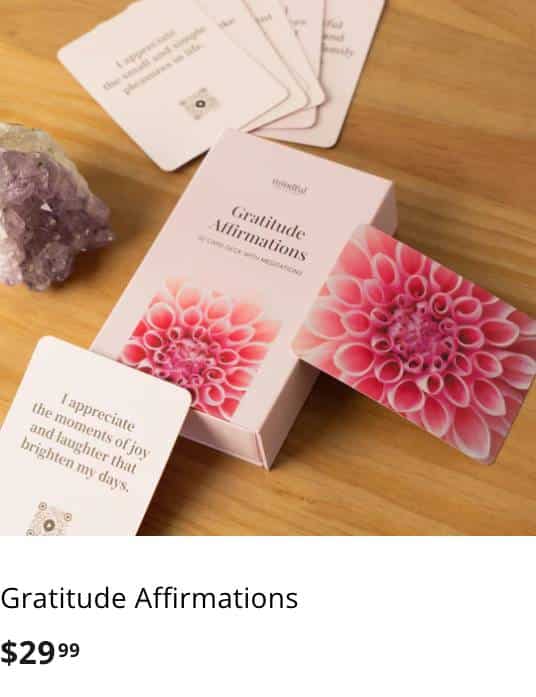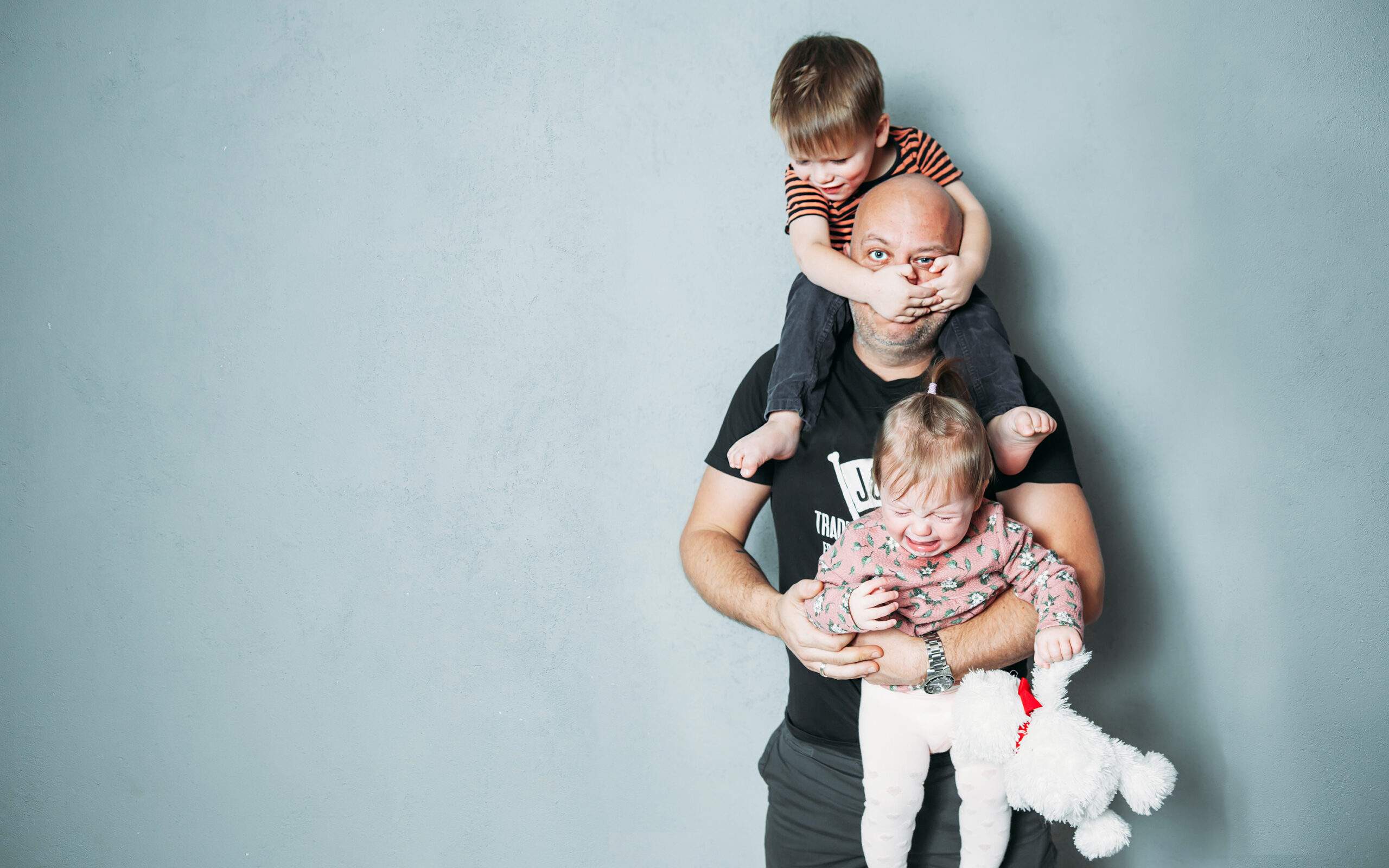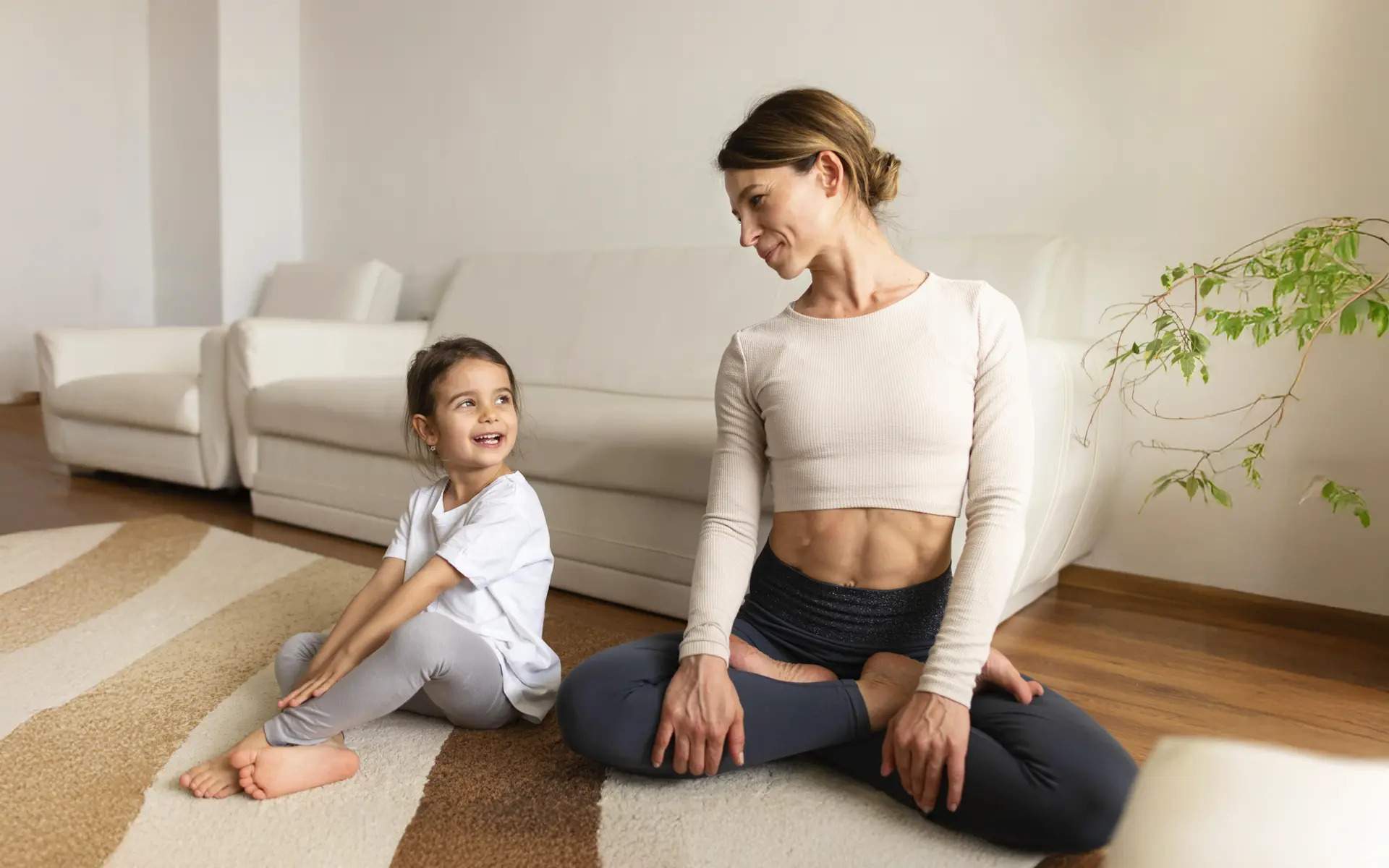

Summary
Purpose & Definition: Mindfulness for kids is about paying kind, honest attention to the present moment—what they feel, hear, or notice—without needing to clear their mind.
Key Benefits: Equips children with tools to build self-esteem, manage stress, and improve focus, academic performance, and emotional resilience.
Core Practices for Kids:
- Family Kindness Meditation: Kids try sending kind wishes to loved ones, acquaintances, and even those who challenge them.
- Fun Mindfulness Activities: Kids can be engaged through sensory games (like savoring snacks or creating glitter jars) and appreciation practices (naming “Three Good Things”).
- Guided Practices: ge-appropriate meditations (from short audio sessions for preschoolers to 8-minute practices for older kids) help children focus on positive moments and breathing.
Mindful Parenting Tips: When parents practice self-care, active listening, acceptance, gratitude, and forgiveness, they’re modeling mindfulness for the whole family.
How to Practice Mindfulness for Kids
By teaching children meditation and mindfulness skills we help them increase their well-being and enable them to meet the stresses of the world with presence, self-compassion, and openness.
In order to help kids of all ages find their way into practicing mindfulness, it can be helpful to give them an easy definition they can relate to.
A Definition of Mindfulness Meditation for Children
Mindfulness meditation, at its simplest, is paying attention to what is happening in the present moment. It may be what you’re feeling, hearing, or anything else you notice. There’s no special place of calm you have to reach and it’s not about clearing your mind, it’s just an honest and kind look at what you’re experiencing in this moment.
A Mindfulness Practice for Families
One easy way to introduce mindfulness to your children is through informal practices that you can do along with them. Start with a simple kindness meditation—offering good wishes and compassion to others.
1. To begin, find a comfortable sitting position. You can even place a hand on the heart. Allow your eyes to close or lower your gaze toward the floor.
2. Bring to mind someone who you really respect and look up to, and who really loves you in return.
3. Notice how you feel as you bring this person to mind.
4. Make a kind wish and send it their way. What would make them happy?
5. Next, bring to mind someone else you love and care about: A family member, a friend, a beloved colleague. Just bring this person to mind, sending this person a kind wish.
We’ll move from here to a more neutral person. Perhaps someone you don’t know very well: A parent you see occasionally in the pick-up line, a person who delivers your mail, or makes your coffee in the morning. Just bring this person to mind and imagine yourself sending them some kind of kind wish.
6. Lastly, bring to mind someone who has frustrated you lately, someone who is a little difficult. Send this last person a kind wish—something nice for them in their life.
7. Check in with your mind and body as you conclude this practice. Allow your eyes to open if they’ve been closed. Notice if there’s any shift
Why Teach Mindfulness to Children?
When we teach mindfulness to kids, we give them the tools they need to build confidence, cope with stress, and relate to uncomfortable or challenging moments. The earlier we do so in their young lives, the greater the opportunity to help them cultivate resilience and develop and refine their mindfulness practice as they mature.
Teaching mindfulness to kids can also help shape three critical skills developed in early childhood: paying attention and remembering information, shifting back and forth between tasks, and behaving appropriately with others. These abilities are known as executive functions and they are essential for more advanced tasks like planning, reasoning, problem-solving, and positive social relationships.
Three Benefits of Mindfulness for Kids
Studies show that the benefits of mindfulness for kids may include:
1. Increased focus, attention, self-control, classroom participation, compassion.
2. Improved academic performance, ability to resolve conflict, overall well-being.
3. Decreased levels of stress, depression, anxiety, disruptive behavior.

Mindfulness Activities for Kids
To introduce the idea of mindfulness more directly to your kids, you can use exercises that encourage them to tune into their senses. Make a game out of eating a snack very slowly, savoring the smell, texture, and taste. Or, dive into an afternoon of glitter jar making with any variety of materials: glitter, different-coloured beads, food colouring and oil, pieces of lego. The DIY craft doubles as a creative exercise and a mindfulness tool to represent the mind settling.
An Appreciation Practice for Children
Leading the game:
- Ask your child: “Do you ever feel disappointed by something or someone?”
- Ask: “How did that make you feel?”
Acknowledge their feelings and, if appropriate, talk about them. - Say something like: “I bet even when you’re feeling disappointed there are good things happening in your life, too. Let’s name three good things together.”
Tips for naming three good things:
- Remind your child that the point of this game isn’t to pretend they’re not upset when they feel upset. It’s to remember that they can feel two things at once: they can feel grateful for good things while feeling sad, hurt, or disappointed by challenges.
- If children or teens have trouble thinking of three good things on their own, brainstorm and help them discover some.
- When kids understand that this game is not about sweeping their feelings under the rug, the phrase “three good things” can become a playful and humorous response to the minor gripes that show up in family life.
- Parents can encourage kids to remind them to name Three Good Things when they’re stuck on a trivial disappointment or minor annoyance, too.
- To develop a habit of thankfulness, play Three Good Things around the dinner table, before bedtime, and at other times when the family is together.

Guided Mindfulness for Kids
Once your child is comfortable with the idea of meditation, you can offer them tools to refine their own practice. Here are three guided practices developed for kids. Feel free to join your child in these meditations if it helps encourage focus.
An 8-Minute Practice to Notice Positive Moments
A Mindfulness Practice for Kids: Coming Back to the Positive—From Dr. Mark Bertin
- Lie down somewhere comfortable. Let your arms and legs fall to the ground. Close your eyes gently.
- Start to notice how your body changes with each breath you take. Each time you breathe, your belly moves up, and your belly moves down. If it is easier, put a hand on your belly. Or if you want, put a stuffed animal there.
- Each time you breathe, your belly moves. Your hand, or your toy, rises, and then falls. See if you can count ten breaths that way. Breathing in, one, breathing out, one.
- When you lose count, don’t worry about it. That’s normal, and happens to everyone. Come back to whatever number you last remember.
- Now, shift your attention to your day. Breathing in, focus on your breath as your belly goes up. Breathing out, focus on something that went well today.
- With each breath: breathing in, noticing your belly move, and with each breath out, noticing something that went well today.
- Now, picture something about yourself that makes you proud. Breathing in, focus on your belly moving. Breathing out, picture something that makes you proud of yourself. If nothing comes to mind, that sometimes happens. If that’s how you feel, picture what you’d wish for yourself instead.
- Finally, bring someone to mind who makes you happy. Before we end, try one more practice. Breathing in, notice your belly move. And now, breathing out, picture someone who makes you happy.
- As you come to the end of this practice, take a few deep breaths, and start to wiggle your arms and legs. Pause and decide what you’d like to do next.
- It’s normal to have thoughts that make us feel scared or bad. We should never ignore anything important, but it’s useful to focus on the rest of our lives too. Take a few minutes every day to notice what has gone well, and see what happens next.
Guided Audio Practices for Kids
1. A Meditation for Preschoolers
This guided practice will help you teach your child the basics of mindfulness by drawing on the elements of nature. Follow along as your child observes their experience and explores their strength within.
Be Like Nature: Mindfulness for Preschoolers—From Scott Rogers
2. A Meditation for Young Kids
A body scan meditation is a great way to help your child bring attention to the present moment—especially when emotions or thoughts are overwhelming. They’ll learn to explore sensations in the body while bringing calmness, attention, and appreciation to daytime routines or bedtime rituals.
A Calming Body Scan: Mindfulness for Kids—From Dr. Mark Bertin
3. A Meditation for Teens
Preadolescents and teens can practice mindfulness the same way as adults. Although, practices geared toward this age group often feature language that is more engaging to them. Here is an 8-minute practice, appropriate for older kids, that uses counting breaths to cultivate mindful awareness.
Count Your Breaths: Mindfulness for Teens—From Dr. Mark Bertin

Sign up for our FREE resilience kit
Mindfulness Practices for Families and Kids
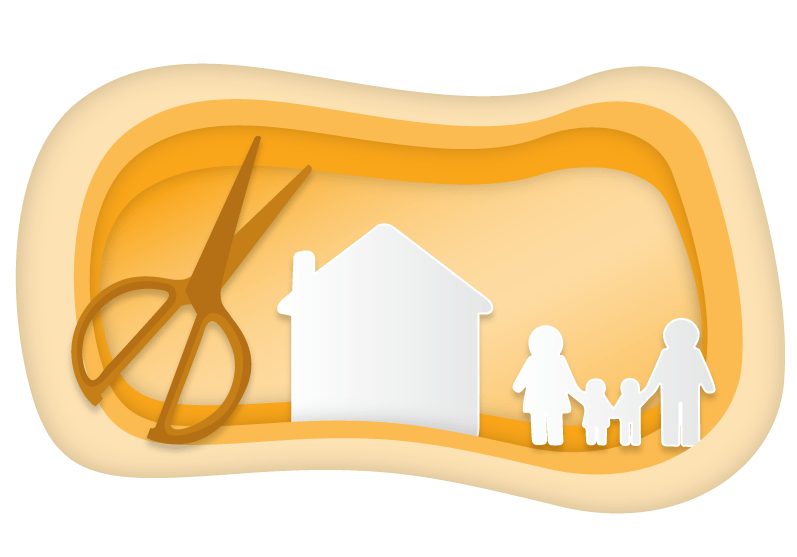
Helping Kids Cope with Stress
Mindfulness practice can offer your child stress management strategies to calm their nervous system. Below are a few kid-friendly breathing techniques you can demonstrate and do with them.
5 Mindful Breath Practices for Children
1. Belly Breathing
When breathing in, the belly expands slightly; and when breathing out, it contracts. Do several rounds and return to normal breathing.
2. Mindful Breathing
Simply notice the breath and feel it move in the body. You can add visuals and words to make the practice more engaging. For example, on the in-breath ask your child to repeat the phrase, I am a lake and on the out-breath, I am calm. This technique can be adapted to use any visual and taps into the power of imagination.
3. Teddy Bear Breath
This is a great variation of the belly-breathing practice for little ones. Have them lie down with a teddy or stuffed animal on their belly, and let them watch as it moves up and down while they breathe, as if they are rocking it to sleep.
4. Four Square Breathing
This practice is a useful tool for older children. Breathe in for a count of four. Hold the breath for a count of four. Breathe out for a count of four. Hold the breath for a count of four. Do several rounds and return to normal breathing.
5. Basic Breath Ball Practice
You can use a Hoberman sphere—a geodesic dome that can be folded and unfolded—to teach your child basic breath awareness. The toy can be referred to as a breath ball because the dome’s movements mimic the movements of breathing: as the dome folds inward, we imagine the out-breath contracting; as the dome expands, we imagine the lungs expanding on the in-breath.
1. Using both hands, gently hold the breathing ball in front of your belly.
2. Hold one square on opposite sides of the sphere’s surface.
3. Take a deep breath in. As your belly expands, let the ball expand with it.
4. Breathe in fairly slowly, maybe holding momentarily at the top of the breath as you fully expand the ball.
5. As you breath out, allow the sphere to contract to its smallest size.
6. Repeat a few times. You might even count along in a rhythm.
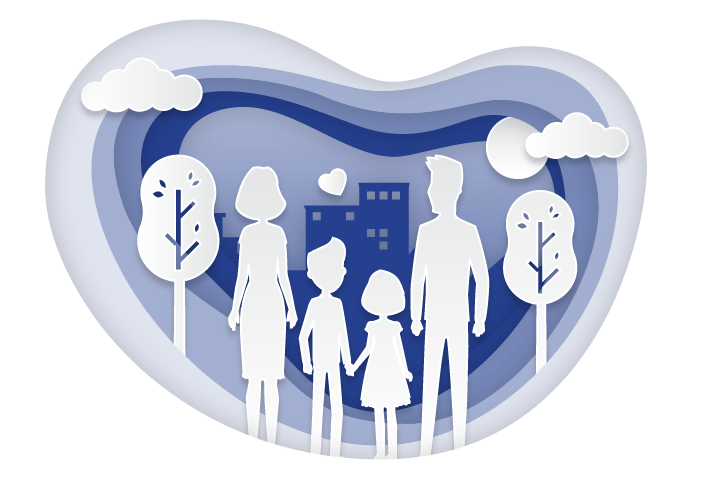
Mindful Parenting Tips
By Elisha Goldstein and Stephanie Goldstein
It’s important to follow the oxygen mask principle: put your own mask on first, before you help your child. The more we discover how to be mindful ourselves, the more we can turn to mindful parenting strategies and appreciate our children’s capacity to be present in each moment.
There’s an inner skill set called for in parenting—an awareness of what is, what’s changing, and what matters going forward. In day-to-day life, take the time you need to notice your own feelings, pause before responding, and practice listening.
7 Things Mindful Families Do Differently
1. Embrace Imperfection
You are going to make mistakes, you are going to hurt your children’s feelings, and you are not going to be able to show up in all the ways you want to or the ways your children want you to, but none of that makes you a bad parent—it only makes you a human one. When you can move into a place of acceptance of this you are able to shift into a greater ease and grace within yourself.
2. Listen with Curiosity
When we pause and listen to each other more in our lives, we can engage the experiences in our family with a growth mindset. We can see the struggles and triumphs as opportunities for learning and growth. Instead of judging each other, we can get better at recognizing when we don’t understand where the other person is coming from, lean in with curiosity and say, “tell me more.” Or we might try and stand in their shoes to understand their perspective by asking ourselves, “why might they be acting this way?”
3. Communicate Courageously
Being clear and honest with each other about what you need and how you feel is ultimately an act of kindness that creates trust and connection. This means showing up with our partners and kids with an open heart and an open mind. It builds on listening with curiosity and creates space for everyone to feel comfortable to share how they feel and what they need.
4. Practice Appreciation and Gratitude
While words of affirmation may or may not be your primary love language, we all want to be seen and appreciated and there’s a surprisingly simple way of doing this that can have huge benefits—intentionally practicing being appreciative and expressing gratitude to one another. By taking the time to acknowledge our kids or our partner when they empty the dishwasher or are ready on time, we can shift the culture of the household from demanding and frustrated to cooperative and grateful
5. Forgive Ourselves and Each Other
In practicing mindfulness we come to understand that our mistakes aren’t signs of failing at being a human. Instead, they are opportunities for learning about the inevitable pitfalls of life, what gets in our way and understanding the optimal route to get back into a space of balance and connection.
The simple phrase of “forgive, investigate and invite” can be enormously helpful. If we have transgressed, we can set the intention to “forgive” ourselves for this wrongdoing, understanding that we can’t change the past, remembering that we aren’t perfect, and realizing that we often make mistakes out of ignorance, confusion or upset feelings.
6. Practice Support and Generosity
Our kids are always watching us, learning how to be in the world and modeling our behaviors. So it’s important that we model this way of being in the world and include them in these acts as often as possible. Want some ideas? You can consider getting involved in service projects at a local school or organization. You can encourage your kids to make pictures or cards for their grandparents or someone who is ill. These small or large acts are the essential healing agent within the family system, our culture, and the world. Ultimately, connection is the cornerstone of well-being and it starts in the family.
7. Remember to Play and Have Fun
It seems silly to say that any of us would forget to have fun and enjoy each other but it’s more common than you think. Raising children is probably the most important job you will ever be tasked with and the pressure of raising good humans can be weighty. So much so that we can fall into a pattern of taking things too seriously and being overly focused on tasks (chores, homework, activities, etc.) that we lose the enjoyment of being together.
Featured Mindful Products
more resources
How to Teach Your Kids About Their Inner Critic
Kids need ease and fun when it comes to difficult tasks like challenging negative self-talk, says Dr. Hazel Harrison. She introduces “The Critical Critter” for exploring self-critical thoughts with your child.
Read More
A Mindfulness Practice for Stressed-Out Parents
Try this mindfulness practice the next time that mean inner voice pops up and starts making parenting harder than needs to be.
Read More
Four Ways to Foster Gratitude in Children
Children who learn to practice gratitude are happier and more optimistic in the long run. Try this four-step practice to foster gratitude with your child.
Read More
Five Ways to Foster Self-Esteem in Kids
Parents often respond to children’s self-doubt by offering praise. But what they really need is help quieting their inner critic.
Read More
7 Classic Children’s Books That Teach Kids Mindfulness
Along with newer children’s books about mindfulness, many beloved picture books also offer mindful messages about kindness, friendship, and contemplating the world around us. Here are a few of our favorites.
Read More


